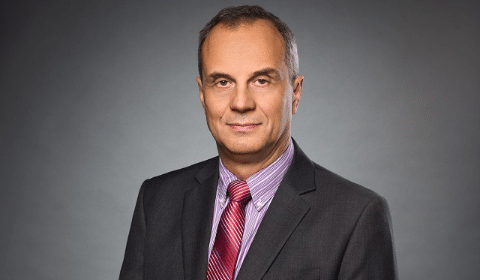The cost of upgrading European energy networks by 2030 could reach as much as 584 billion euros, according to data from the European Commission. This will also require a lot of time, of which we have less and less. Already green energy cannot always be fully utilized, as the network infrastructure in Poland struggles with its surplus. As experts from Eaton point out, until the infrastructure is modernized, energy storage and UPS systems can help stabilize the network. However, legal regulations are urgently needed for such devices to be used on a large scale.
According to the report by the Renewable Energy Institute “Photovoltaics market in Poland 2024”, Polish photovoltaics reached a power of 17.73 GW at the end of the first quarter of 2024. This number might inspire optimism in the context of achieving zero-emission goals, however, green energy destabilizes the energy grid and affects its frequency. When there is more energy in the network than demand requires, the frequency increases, and when demand is higher than supply, the frequency decreases. Such fluctuations have a negative impact on the network, which should be maintained at a constant frequency of 50 Hz.
The method used by distribution network operators to balance the energy system is energy cut-offs from RES. As the Polish Photovoltaics Association indicates, their scale has soared from 40 GWh in 2023 to 350 GWh by mid-May this year.
“The power grid often does not show sufficient flexibility. There are increasingly moments when the production of energy from RES is exceptionally high and the network may become overloaded due to its insufficient capacity. Cheap green energy is shut down to leave room for conventional sources, which cannot be shut down so quickly” – indicates Jacek Misiejuk, president of Enel X, operating in the field of energy supply and energy management. “Transmission and distribution system operators need additional methods to balance generation and energy demand, avoid network overloads, and maintain power reserves. To deal with the excess energy in the network, we use Demand Side Response (DSR) programs that provide power reserves on the consumer side and allow for increasing the share of renewable sources in the energy system” – adds Jacek Misiejuk.
How not to waste energy surpluses?
As we transition to RES, stabilizing the network without losing power generated by wind or sun becomes crucial. A necessary step in improving network efficiency is a thorough modernization – without it, the energy market will not achieve the zero-emission goal. This is a costly and time-consuming task. However, solutions that would be helpful in stabilizing the network, like UPS and energy storage, can already be used.
UPS systems are used to maintain and protect devices in case of primary power failure or network disturbances. The power frequency regulation through these devices is short-lived (from a few to several tens of minutes), but the response to network disturbances is instantaneous. Some of these power supplies can cooperate with the power grid and allow bidirectional energy flow (both accept and return energy to the grid). Thus, facilities that use many UPS systems, like data centers, could support network operators in its stabilization.
Energy storage and data centers will support the grid
Energy storage devices are used for accumulation of excess electrical energy, for example, from RES, in order to use it later. They can return energy to the grid for a longer time – depending on the power and capacity, even up to several tens of hours.
“UPS with bidirectional energy flow are already successfully used, for example, in data centers in Ireland. Unfortunately, in Poland, we lack regulations that would allow the use of these devices to stabilize the frequency of the power grid and return power back to the network. More and more discussion is also focusing on the necessity to use the potential of energy storage. These talks should be translated into actions as soon as possible, i.e., appropriate regulations enabling full utilization of the devices’ potential for energy market balancing. This will stabilize the network also during its modernization.” – summarizes Władysław Szewczuk, product manager at Eaton.
Sources:
Data from the European Commission: https://ec.europa.eu/commission/presscorner/detail/en/ip_23_6044
Report by the Renewable Energy Institute “Photovoltaics market in Poland 2024”
Report by the Polish Photovoltaics Association: “Non-market redispatch of photovoltaics in Poland”
Source: https://ceo.com.pl/zielona-energia-sie-marnuje-polska-siec-energetyczna-pilnie-potrzebuje-modernizacji-i-zmian-w-prawie-31316
